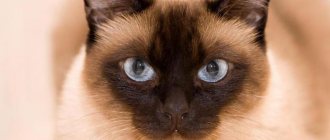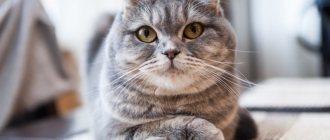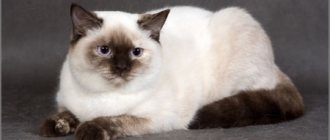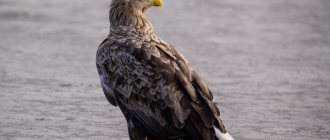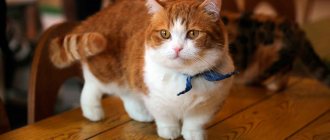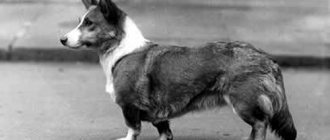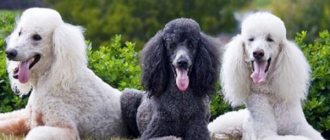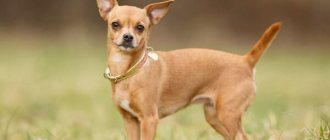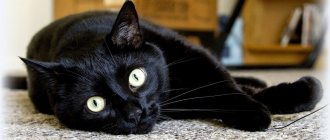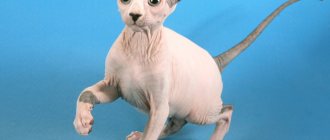Rare colors of Scottish cats
You can find a pet of almost any color, but Scotch tortoiseshells are of particular value to breeders. Such individuals have a combination of genes for two primary colors - red and black. For lovers of the breed, gold and silver colors are now in fashion. They are also called precious. Those who are looking at this breed and are going to buy a Scots kitten will be able to choose the color they want - the variations are very rich and varied.
Tortoiseshell Scottish cats.
Colorful
Colored or color-point are colors in which the main body color is light (white or cream), and the ears, muzzle, tail and paws have a darker shade. The Scots owe this rare color to their British ancestors, who had Persian cats in their family.
A little about genetics
It is especially interesting how the color of a Scottish kitten is formed and what it depends on. In the genome of this breed, two colors predominate, responsible for the color of the animal - red and black. Anyone can, under certain conditions beyond a person’s control, become dominant. Such a gene suppresses weak ones, which are called recessive. There is also a third gene, the so-called diluent. It is responsible for the degree of pigmentation saturation.
When these genes are combined with each other, the most unusual coat colors of an animal can appear. It is extremely difficult to determine in the first weeks what color a kitten will have in the future. The shade he was born with is not constant and may change as he grows older. In some cases, dramatic changes occur. The change in shade begins at six months and lasts up to two years. The table below shows options for crossing the colors of parents, according to which their offspring inherits the coat color.
How the coat colors of the offspring are crossed.
Material on the topic: how to get a Scottish fold cat.
Shaded
Shaded coloring is characterized by a coloration in which only a third of the cat's hair is filled with color. The rest of the hair is white. Representatives of this variety have a light undercoat, shaded coloring on the sides, back, ears, tail and head. The chin, bottom of the tail and belly are highlighted in white.
Depending on the color of the “shading”, silver and golden varieties are distinguished.
Silver
The silver shaded color is characterized by a snow-white undercoat with dark gray tips of the hairs. The nose is brick, and the eyes are lined with black.
Golden
With a golden shaded color, the animal's fur has a light peach undercoat with a golden tint. The nose and paw pads are chocolate.
Primary colors
There are primary coat colors for Scottish cats. Any color of an animal can be classified into one group or another:
- tabby;
- solid (plain);
- chinchilla;
- smoky;
- shaded;
- with a white base;
- colorful (colored);
- tortoiseshells.
These colors are considered the most important for classifying an animal by its color. Each cat of the Scottish breed can be classified into one of the listed groups.
Scottish Straight Color Point
Plain
Another name for this group is solid colors. This type includes monochrome animals with uniform tinting of the coat in one color. Since the British breed was of particular importance when breeding the Scots, the Scottish coat received blue and gray tones, and the color of the iris acquired an amber color. Various variations of genes (dominant, recessive) determined the appearance of different colors of Scots. These can be a variety of shades:
- black or ebony;
- milk chocolate or cinnamon;
- chocolate or brown;
- “deer” – faun;
- red (red);
- soft gray with a pink undertone – lilac;
- pure white.
White Scottish Fold.
A cat's eyes directly depend on the color of its coat. White pets tend to have blue or different colored eyes (heterochromia). Purple and black cats have irises of yellow and copper shades. Amber is typical for individuals of chocolate colors. This type of wool should not be interspersed with any other color. The tone should be rich and uniform along the entire length of the hairs. The presence of marks on the coat means the presence of a defect, which reduces the value of the cat if it takes part in professional felinologist exhibitions.
Cats of this breed, colored pure black, white, red, chocolate, are considered rare. Such kittens will be more expensive. Precious colors - gold and silver - are also considered solid. The task of any breeder is to preserve the purity of the color and its breed type. They are unstable when crossed and are very finicky about adding a new set of genes.
Two-color or bicolor
This term refers to the combination of half the wool is white and the second half can be colored in other colors, for example:
- blue;
- cream;
- red;
- tabby
In the latter case, the pattern must be strictly symmetrical. With this combination, animals can be called cream bicolor or red bicolor.
Blue straight-eared bicolor
Cream bicolor fold
Red bicolor straight
Tabby bicolor fold
Point
The body of the animal has a light basic shade, some areas are painted in darker colors. This is a group of oriental colors (originally found in eastern cat breeds). A similar color is also found in Persian, Fold, Thai and other cat breeds. In turn, color points are divided into subspecies, of which there are 20. There are basic or classic combinations that occur more often than others:
- Seal Point - These cats have a basic white or cream color with dark brown and black spots on the body. In the English version the color is called seal-point.
- Blue point - blue or gray spots on a white-blue background. Other cool shades may occur.
- Chocolate point. The general color of the animal is similar to ivory, and the markings are a brown chocolate shade, but several tones lighter than those of seal points.
- Lilac. Another name for lilac (lilac-point). These cats have spots of brown or gray-pink, lilac, and the body of the animal is light beige.
Interesting read: who are the lop-eared Britons?
Using these colors, breeders created other shades that are now widespread. Such derivatives are:
- cream points – soft cream-colored spots on the cat’s body located on white fur;
- red - red spots on a light body (sometimes pure white);
- Torti – similar to tortoiseshell. The main feature is that it occurs in females. The markings are heterogeneous and can be in the form of a mix of spots of brown, red, cream, and blue. Another feature is that their shade changes with age;
- tabby - the markings are striped, the colors may vary, and the body is predominantly light.
There are also rare points that are considered exotic:
- Cinnamon Point - Markings are cinnamon colored on a beige body. The skin on the pads is light pink;
- faun - light purple markings located on the beige body of the animal.
It is characteristic of all points that the color depends on the animal’s body temperature (in the cold, the colored areas become a little darker and more saturated). Breeders are constantly working with this group to create more interesting marking colors.
Torties or tortoiseshells
Tortoiseshell, also called tortoiseshell, is similar to the coloring of a turtle's shell. Such cats have an interesting pattern on their body, similar to this reptile. This coloration can be unpredictable and may change. This happens after every molt, which occurs twice a year. In this case, the design, pattern, and color of the marks may change. Individuals with this color are almost always sterile and are found only in cats.
Cats with such fur are extremely rare. The color scheme is usually formed by combinations of red, black, and cream colors. Individuals with a color distribution proportion of 1:1:1 look most impressive. There are several features of this color:
- In blue tortoiseshell cats, black can be replaced by blue, red by cream. This creates a bluish-cream combination.
- Purple is replaced by black and red, and cream by purple.
- Chocolate turtles have a black to chocolate substitution.
There are a variety of combinations. The main requirement is a symmetrical, uniform pattern throughout the animal's body.
Smoky
This type is also called smoky or smokey (from the English “smoke” - smoke). Such a cat should have a uniform color without inclusions. The base is silver-white wool. Part of the hair is black, the rest is silver. This type belongs to the silver group. This phenomenon is formed by the dominant gene of this color.
Smokey should not have a pattern, but this can sometimes happen. It can be perceived as a solid (solid) color, but this is wrong. The animal's hair is colored 2/3 of its length and is called shaded. If your pet has thick fur, you need to part the fur to see the color of the base.
Tabby
The animal may have eyeliner on the nose, eyes, a pattern on the chest that resembles a necklace, rings on the tail, paws, spots on the ears or cheeks. There may be a line around the nose. The stripes on the body should not be wide. Marbled species may show a gradual transition to spots on the belly or neck. This pattern stands out against the general background of the pet’s color. There are different tabbies:
- Tiger or mackerel. Such animals may have narrow stripes directed vertically. A pattern resembling a collar appears on the neck. The side stripes rise up the back, forming a saddle-like pattern here.
- Spotted or spotty. Spots of various shapes and sizes have clearly defined boundaries. A line is formed along the entire length of the spine.
- Shaded, whiskey or marble. The pattern consists of spots and stripes that are scattered over the entire surface of the animal. Such animals can have any coat color, the main thing is that they have a pronounced pattern against the general background. It owes its name to its similarity to this textured stone.
Tabby Scottish fold.
Tabbie can also be classified by color:
- Silver. It is the main one, on which a black pattern is applied.
- Silvery blue. The undercoat is white on the sides, face and tail of the animal.
- Reds. Red base with rich red patterns.
- Brown. The wool has a dark copper color, on which a black pattern is drawn.
- Blue. Refers to cream and blue tones. The pattern is expressed against the general background.
- Cream. The base of the wool is light, the pattern contrasts against its background.
- Cameo. White base with red stripes.
This coloration suggests the presence of a zonal pattern on the body. It can be in the form of the letter “M”, which is located on the animal’s forehead.
Paticolor
Characterized by the appearance of white spots of different sizes and shapes. It could even be a white cat with a few spots of a different tone. Two options are considered standard, there are eight in total. The ideal is 1/3 to ½ white. If a cat has more than 90% of its entire surface painted white, the color is called “harlequin”. If an animal has a colored tail, then it is a van.
Scottish Fold Paticolor.
Chinchilla
The basis of this color is tipping. This phenomenon is characterized by the coloring of 1/8 of the hair, most of which is white. A kitten gets this color if both of its parents are colored in the same way. There are three main types of chinchilla:
- golden;
- blue;
- unique.
Silvers may have stripes or shadow marks on their tail. The eyes are green and the nose is beige. The golden chinchilla is characterized by the presence of a reddish tint on the back, sides, and tail.
Ticked
This color is considered rare for this breed; kittens with a similar color are highly valued. The peculiarity lies in the color of the hairs. The hair should have three stripes of different colors. Also, such cats are sometimes called Abyssinian. This creates the image of small specks on the animal’s fur. There may be stripes on the paws and tail.
Interesting read: what to feed the Scots.
Shaded
The coloring extends to the upper third of the hair. The rest of the body is painted white. Such individuals have a light undercoat. The coat is shaded on the sides, back, and head. Golden, silver, and red colors can also be shaded.
Wang
White body except for tail and muzzle. There may be several spots on the animal's body and paws. Their coat is unevenly colored and looks like a tabby.
Harlequin
4/5 of the wool is dyed white. The spots are scattered randomly over the entire surface.
Shaded
ticked
Harlequin
Wang
Cameo
brindle
With white
In the color of the Scots, white may be present in parallel with another shade. Depending on the “amount” of white on the animal’s body, several varieties of colors of these cats are distinguished.
Bicolor
Bicolor (two-color) implies from 30 to 70% white in the color of a cat. An additional shade may include:
- blue;
- cream;
- red;
- tabi.
As a rule, the paws, belly, neck, part of the muzzle and chest are white.
Harlequin
The originality of the harlequin's color lies in the white coloring of 4/5 parts of the animal's body. The tail, top of the head and ears should be black. The tip of the cat's nose is pink.
Vannes
The bath variety involves the presence of colored spots on the head (sometimes) and a colored tail.
Matching eye color to coat color
Until four months it is impossible to determine eye color. It can be identified by its fur, the shade of which may change. There is a special table by which you can determine the eyes of an animal. It must be remembered that the final result cannot be guaranteed, but in the vast majority of cases it coincides with the data in the table.
Table of correspondence between eye color and coat color of Scottish cats.
Peculiarities
The discoverer of the Scottish Fold breed is rightfully considered the Scotsman William Ross, who noticed kittens with an unusual coloring and strangely shaped ears from a farmer he knew. To obtain new, more diverse types of coloring, the Scottish breed was first crossed with others.
Interspecific crossings occurred especially often with British cats . However, now representatives of the Scottish Fold breed have all the necessary genes to reproduce almost any color , so in our time, crossing a purebred Scottish Fold with other breeds is very, very undesirable.
Like other animals, in Scots a certain set of genes is responsible for coloring. There are two predominant shades: red and black . Each of the colors, or, more precisely, certain genes responsible for a specific color, can be both dominant and recessive. The saturation of a certain shade of fur, which is formed by the diluent gene, depends on this.
A very unusual genetic combination in white cats. Two cases are possible: either a complete absence of color, or suppression of other genes . In this regard, white Scottish cats are divided into albinos and dominant white.
Remember that kittens' colors will change as they grow older. A Scottish kitten will reach its real, “adult”, full color only at the age of two years.
Color standards and disqualification
Professional systems of felinologists where the Scottish Fold cat breed is recognized: WCF, CFA, TICA, ACF, ACFA. They all have their own characteristics, but in general there is a set of color standards for the Scottish breed. If an animal does not comply with them, it is disqualified from all breed shows and competitions and cannot be allowed to breed. Of course, a cat disqualified for color can have offspring if the owner does not want to sterilize it. But her kittens will never have a pedigree that is recognized among breeders.
Table of Scottish cat colors and disqualifications.
The variety of colors of Scots is huge. To obtain such a palette, the breeder needed decades of crossings with other breeds similar in genotype. Today, crossing with other breeds is practically not used (unless we are talking about Scottish Folds), since the Scots have already received a stable set of genes necessary to continue their pedigree.
Wang
The Van coloring of Scottish pets includes a white coat with a colored tail and several spots on the head. If there are large spots on the paws and back, this is considered an undesirable sign for a purebred Scot. And a cat with dark red patterns is called a red van.
The color of the spots can be single-color or tabbed.
Torti (turtle)
It should be noted right away that you can only buy a turtle girl. In males, this color is not provided by genetics. But if you do come across a cat like this, then this is a big exception, which, however, does not increase its cost, but, on the contrary, reduces it.
Tortoiseshell color is considered to be fur on which spots of different colors (black, chocolate, blue, lilac) alternate with red or cream marks. For breeders, a particularly important indicator is the intensity of pigment expression and uniformity of location.
Smoky (smoky, smoky)
The main condition for this color is that the hairs at the base of the body must have a silver-white tint. Those. the silvery-white hair turns into another color, such as black or blue. This phenomenon is called typing and occurs as a result of a dominant silver gene. The smoke can be different, for example, chocolate.
There are often cats with additional patterns on their fur, but according to color rules this should not be the case.
Don't confuse this color with a solid color! If you're not sure, part your cat's fur and see what color is at the base of his fur.
History of the breed
Scottish cats are a fairly young breed that immediately became noticeable because of their cute round face and curled ears. The abundance of colors made the pet a favorite among breeders, allowing you to choose a pet of any color.
IMPORTANT: the Scottish tabby cat can be folded (fold) or straight (straight).
Marble color is one of the varieties of tabby
Color with marbled streaks is an absolute achievement of breeders. Sometimes this type of color is considered classic for all Scots, but this is a mistaken opinion. To obtain a contrasting pattern, pairs with a pronounced marbled tabby are selected, and only as a result of competent selection, marbled Scottish kittens are obtained.
Solid (solid, plain)
A solid color implies the absence of any slightest admixture of other shades. The surface of the fur is colored evenly on all parts of the body. The Scots once upon a time considered gray or blue to be the most common color. These are the favorites most often found among breeders. But today seals with other colors are also gaining more and more popularity: white, chocolate, black, brown, cream, red and fawn (which literally means the color of a young deer). Sometimes it happens that nature interferes with the uniform color of the fur and leaves a mark of a different color there. Such cats noticeably lose value because they are considered a breed defect.
Nutrition
To have a healthy pet, a Scottish Fold, you need to take care of its nutrition. From the moment a cat appears in the house, you need to determine what its diet will be. Some owners prefer to feed their pets natural food, others high-quality dry food. What veterinarians do not recommend is mixing food. Having chosen a certain method of feeding, you need to stick to it.
If these are natural foods, then they should include boiled chicken, beef or offal. Fish and liver should only be given to the cat boiled. If your pet likes cereals, you can give rice, millet and oats cooked in broth or milk. Fermented milk products are good for the stomach: low-fat cottage cheese and kefir.
If the choice falls on feeding dry food, you need to choose only premium food. They contain vitamins and microelements. Moreover, food is divided according to age. Young cats need only trace elements, while older cats need supplements for bone tissue and gentle digestion of food.
Rules for choosing a kitten
You should buy a kitten at the age of 3-4 months, this will allow you to avoid making a mistake in choosing a color for those who are looking for a marbled Scotsman. You should focus on a specialized nursery, whose breeders have been doing their business for a long time, have many good reviews and a license to breed the breed. As a rule, such people are not prone to deception, since they greatly value the reputation they have accumulated over the years.
The kitten acquires its “signature” color by the age of three months, but to be completely convinced of its quality, you should look at the entire litter and the parents
An experienced breeder can provide certificates confirming the health of the parents and their offspring, and he will not refuse to demonstrate the conditions in which he keeps his pets.
The kitten itself must be well-groomed and healthy. His eyes, nose and ears should be clean, his belly well-fed, and his fur combed, without lumps or debris in the hairs. The kitten should be curious, playful and not shy.
Health
You need to purchase a kitten only from breeders in order to be absolutely sure that the kitten was born from the correct mating. When choosing a kitten, you need to pay attention to its mobility. He should not be slow in his movements.
The place where the kitten usually sleeps should not be in a draft. He may catch a cold and get bronchitis. Apart from the ears, weak points include the eyes; you need to make sure that they do not water. Wipe them with a special liquid. Veterinarians recommend that your pet be vaccinated in accordance with established standards, before which mandatory deworming is carried out.
How coat color affects the character of a Scotsman
When purchasing a pet, you should not chase fashion; it is better to trust your preferences and tastes. The main thing is that the cat turns out to be “yours” in temperament and character. By the way, some cat owners are sure that the color of the fur affects the behavior of the animal and leaves an imprint on its character.
White and light colored
You want to cuddle these babies endlessly. But they, as a rule, do not like increased attention to themselves. Although they are very loyal to the owner, they are extremely wary and wary of other people. Among some peoples there is a belief that a white cat brings good luck. Whether this is true or not is not known for certain. But the white color can cause a lot of problems for the cats themselves, since 5% of all snow-white cats are born completely deaf. Previously, it was believed that deafness was the fate of absolutely all white-furred tails, but later scientists proved that this is not so. But when buying such a kitten, you should still be more careful.
Black
Despite all the existing prejudices and myths regarding black cats, in practice they are one of the friendliest towards people. They like to stay close to their owner all their free time and always keep him in sight. Charcoal cats are wise, quick-witted, and keenly aware of a person’s mood.
Redheads
Such animals are a ray of sunshine in your home. It is believed that a ginger cat in the home is the key to an indispensable increase in well-being. Those with fiery fur are very playful, willful, cheerful and curious creatures. The golden shades of fur that are fashionable today are characteristic of more formidable animals, whose disposition can hardly be called friendly. And golden Siamese cats are generally considered the worst tailed cats.
Blue and silver
Silver and blue fluffies are real aristocrats. Calm, balanced, noble. They love their owner devotedly, although they are not always ready to demonstrate this publicly. It is believed that these four-legged pets are able to calm and relieve stress in humans. In addition, cats of this color are absolutely not vindictive.
Two-color
Such cats are most in demand among buyers. In addition to their interesting color, they have an easy-going disposition, are friendly, and kind even towards children. Bicolor cats love their owners very much and get along well with other pets.
Pet's habitat
The pet must have a bed or house. When choosing a cozy “cat house” for your cat, you need to make sure that it is not small, but matches her size. Cats do not always sleep curled up in a ball; sometimes they stretch out to their full height, completely relaxing. Only the breed of fold-eared cats likes to sit with their hind legs extended, placing their front legs on their stomachs in the “Buddha pose.”
Since the Scottish Fold marbled cat (her photo is posted in the article) was bred for domestic keeping, she needs “gymnastic equipment” where she can keep herself in shape. These can be all kinds of structures made of wooden sticks and shelves.
To prevent your pet from damaging furniture and upholstery, she must have a scratching post, the height of which would allow her to stretch out to her full height during the procedure. In addition, the claws on the front paws need to be trimmed a couple of times a month by at least 2-3 mm. On the rear, it is enough to shorten once a month. Cats do not like this procedure, so they need to be taught to cut their nails from childhood. Claws are cut only with a special nail clipper, and not with scissors. They can disrupt the tissue structure and injure the claw.
